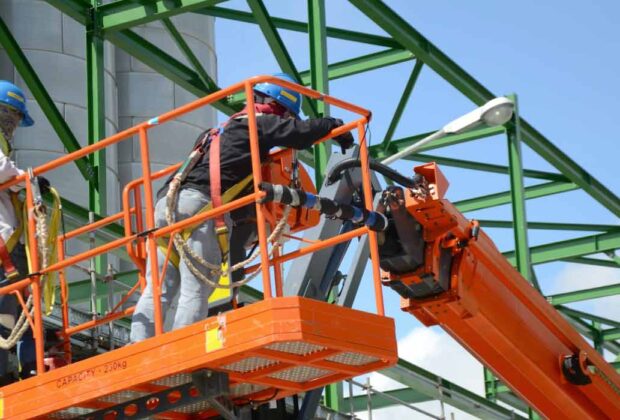Electrical safety training (ESTS) is important for any worker who performs energized electrical work. Energized electrical work can be defined as anything that is connected to or has its own source of voltage (electricity) that is potentially different from the earth in its vicinity. In other words, lights, machinery, cords, or any other object you are performing work on that could have electricity flowing through it. While general electrical safety should be observed by anyone, typically only those who are working directly with potentially dangerous levels of electricity on a daily basis will receive ESTS training, such as an electrician, engineer, or line installer and repairer.
What is CSA Z462 and NFPA 70E?
The CSA Z462 is the Canadian workplace electrical safety standard developed by the Canadian Standards Association (CSA). The NFPA 70E is the American standard for workplace electrical safety and was developed by the National Fire Protection Association (NFPA) in the United States. NFPA 70E was developed before the Canadian standard CSA Z462, and today both standards are largely the same. These standards are also being adopted in Mexico.
CSA Z462 has been developed to be similar to NFPA 70E so that the same best practices could be in place for both countries in terms of addressing safety requirements for electrical workers. These standards focus on things like electrical safety program requirements for employers, training requirements for workers, electrical hazards, safe working conditions, and more.
Why is electrical safety important?
Electrical safety awareness and training is important to protect workers and prevent serious injuries or death. Even experienced electricians and electrical engineers need to put aside complacency and ensure that the time is taken to prevent injuries caused by electricity as much as possible.
Engineers, electricians, and overhead line workers are examples of professionals who are exposed to electrical hazards on the job and are at risk of electrical injury just from performing everyday work-related tasks.
Injuries caused by electricity can occur in various ways:
- Direct contact with electrical energy
- When electricity arcs and flows to a victim at ground potential (often called arc flash)
- Flash burns from the heat generated by an arc flash
- Burns from clothing or other materials catching fire
According to WorkSafe BC’s Working Safely Around Electricity, the damage that electricity causes to the body is determined by three main factors:
- The rate of flow for the electric current (measured in amperes, and determined by voltage and resistance)
- The path of the electric current through the body
- The length of time the current flows through the body (the longer you are exposed to the electrical current, the more serious injuries can become)
Although you can’t really say what injuries a particular amount of electrical shock will give, there is a common misconception that low voltage equals low hazard. However, even a “small” amount of current can cause fatal injuries, such as heart attacks and burns. In general, the longer you are exposed to a current, the more serious the electrical shock will be.
To give you an idea of how important electrical safety awareness is in Canada, let’s take a look at the Ontario Electrical Safety Report for 2009 – 2018. This report analyzes electrical injuries and fatalities—both occupational and non-occupational—to showcase the importance of continued vigilance toward electrical safety. The report states that 137 electrical-related fatalities occurred in the ten-year period. To break that number down further, 54 people died from electrocution or by the effects of electrical burns, and 83 people died as a result of electrical fired (where ignition fuel was electricity and/or the ignition source was from electrical distribution equipment).
While the report highlights that incidents of electrocution and burn fatalities continue to decrease year over year, the causes of the accidents and contexts surrounding them remain the same, proving that continued efforts toward electrical safety are needed. Awareness surrounding electrical safety means that more workers can fully understand what they are working with, and how to prevent injuries to themselves and other workers.
Do I need an electrical safety program?
Electrical safety is everyone’s responsibility, but particularly the employer. According to CSA Z462, when an employee is going to be exposed to potential electrical hazards in the workplace, the employer must provide adequate training, so the employee understands the specific risks and hazards involved in working with electrical energy and possible injuries that could occur.
Subject matter expert Terry Becker points out that some electrical contractors he has worked with have thought that they do not need an electrical safety program because they have a policy of not performing energized electrical work. However, the line between energized and non-energized electrical work is often misunderstood; tasks like checking for a lack of voltage can also be considered energized electrical work. Therefore, it’s always important that companies, electrical contractors, and employees ensure due diligence by receiving the proper training certifications and using the appropriate PPE, tools, and equipment for each job.
Danatec by We Know Training’s Electrical Safety courses are designed to educate both workers and non-workers on key electrical safety topics.
The Importance of Electrical Safety
Failing to work safety around electricity can have catastrophic results. Governments across North America have made significant progress in recent years to develop standardized safety regulations for electricity to reduce electrical injuries and fatalities. Anyone working with electricity can benefit from taking the time to fully understand how it works, the potential injuries it can cause, and how to prevent accidents. Employers are responsible for ensuring that their employees are adequately trained and safe on the job site, but ultimately electrical safety is everyone’s responsibility.




Comments are closed.